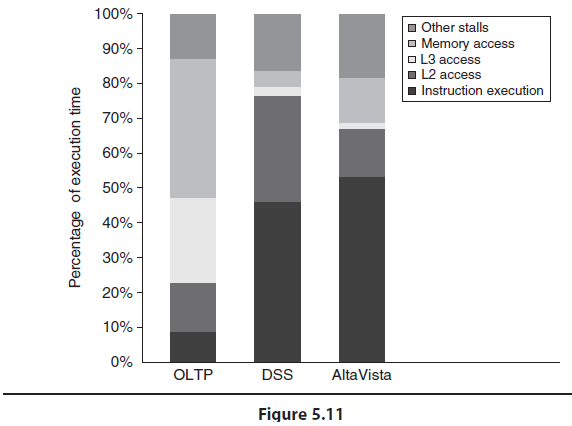This exercise studies the impact of aggressive techniques to exploit instruction-level parallelism in the processor when used
Question:
a. Following the convention of Figure 5.11, let us divide the execution time into instruction execution, cache access, memory access, and other stalls. How would you expect each of these components to differ between system A and system B?

b. Based on the discussion of the behavior of the On-Line Transaction Processing (OLTP) workload in Section 5.3, what is the important difference between the OLTP workload and other benchmarks that limits benefit from a more aggressive processor design?
Fantastic news! We've Found the answer you've been seeking!
Step by Step Answer:
Related Book For 

Computer Architecture A Quantitative Approach
ISBN: 978-8178672663
5th edition
Authors: John L. Hennessy, David A. Patterson
Question Posted:





